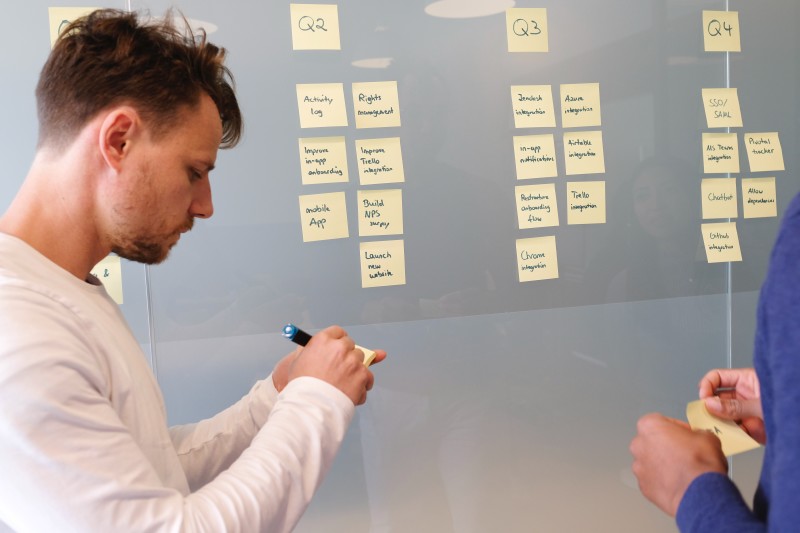Product and project managers may share the same outcomes but play distinctively different roles in product development. At first glance, people most often confuse the roles because they squarely focus on the product development aspect.
However, there’s so much more value than each respective role delivers beyond that. So, at what point in the product lifecycle does each team member step in? In true product management style - it depends.
It depends on the company size, allocated resources on your team, or stage of the company’s life. All to say, each company may define these roles differently. If you’re looking to move into one of these roles for the first time, it’s important for you to ask clarifying questions during the interview process to get a real understanding of how lines are drawn at the organization you’re joining.
What is product management?
A product manager’s job doesn’t end as soon as the project is delivered. They will also find themselves spending time looking at what’s ahead and around them.
They’re steeped in product strategy, and prioritization and ultimately held accountable for the product’s performance goals. As a product manager, you’d commonly be asking questions like “What are macro and micro factors that can impact how people use my product?” or “what information can I gather to influence what problems we should focus on first?”.
As Kate Leto neatly points out, there are two broad categories that product managers possess and need to develop – technical skills and human skills. For a product manager, technical skills would be forming a vision statement, constructing the roadmap, and creating a minimum viable product. The human skills would be the influence, active listening, and emotional intelligence. Both are crucial in becoming a better all-around product manager.

To go into more detail, there are a few things a product manager would be typically responsible for —
Product Research: PMs should be comfortable asking why to synthesize the information drawn from their qualitative/quantitative feedback channels, internal stakeholders, and the broader market.
Creating the product vision: The customer and product research should ultimately help you shape the vision that will serve as the north star for your roadmap.
Maintaining product roadmap: In an agile environment, your roadmap should be a fluid view of what you’re working on now, next, and in the future.
Communication: I’ve often found the best product managers are those that can use storytelling as a tool to simplify otherwise complex concepts into digestible snippets.
What is project management?
A project manager is the de facto change agent on the team. Again, they share the same resolution as the product manager in driving the desired outcome, but they are focused on delivery. They also care deeply about dismantling blockers that may get in the team’s way. Highly effective project managers are typically detail-oriented and exceptional communicators.
Their responsibilities are...
Planning delivery timelines: This is not only used to keep the team on track but also other interested stakeholders abreast of how things are progressing. Ideally, this is a linear view of the project's start and end.
Managing project risks: Most projects will have a set of hurdles to jump over, so it’s their responsibility to mitigate them as soon as they’re spotted. A byproduct of this is also handling unaccounted growth in the project’s scope.
Communicating status updates: The most common question people have is “when is feature x going to be delivered?”. These updates serve to proactively answer that question.
Hold dependent teams/stakeholders accountable: In more complex projects the delivery of a solution could require many teams to move forward. It’s the project manager’s role to keep them accountable for their deliverables to carry out the project.
Do the responsibilities of a product manager and project manager ever overlap? What is the difference between product management and project management?
In short, yes! There are several moments in the product lifecycle where the product and project managers find themselves partnering up. To name a couple...
Scope Creep: When the project manager runs into unaccounted growth in the project’s scope, they usually work alongside the product manager to run the cost-benefit analysis of the additional work.
Task/Story Refinement: Although the product manager is responsible for the big picture, there’s nothing stopping them from dialing in to refine stories or help break down tasks.
In summary, after aligning with your engineering and design partners, product managers should have a solid roadmap of what the team will work on and be able to articulate why it’s important. Project managers then take that to figure out how we will accomplish the work and when we can expect to see it delivered.

Brian Trejo

Read also
Experience the new way of doing product management






